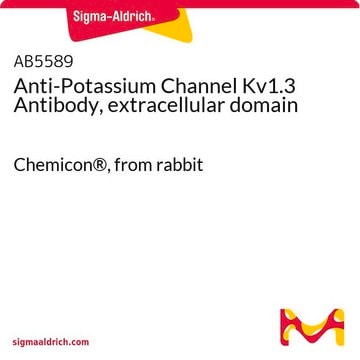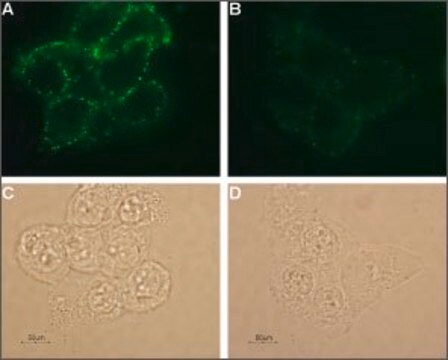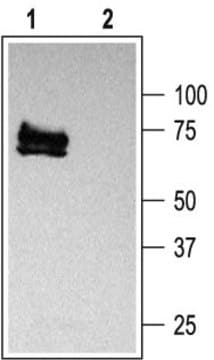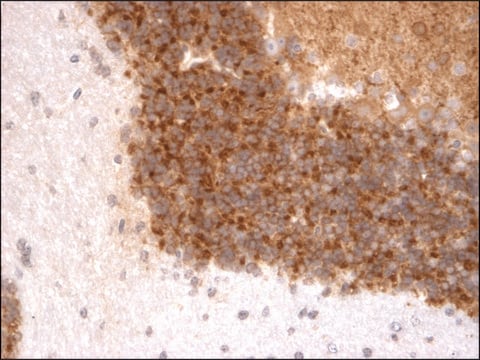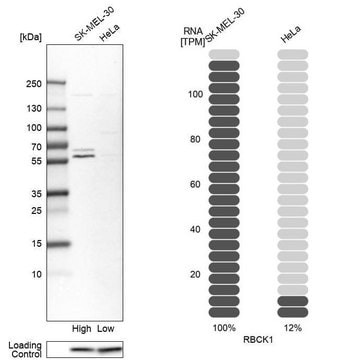P4247
Anti-Potassium Channel Kv1.3 (extracellular)−FITC antibody produced in rabbit
affinity isolated antibody, lyophilized powder
Sinónimos:
Anti-Kcna3, Anti-Voltage-gated Potassium Channel KV1.3
About This Item
Productos recomendados
biological source
rabbit
Quality Level
conjugate
FITC conjugate
antibody form
affinity isolated antibody
antibody product type
primary antibodies
clone
polyclonal
form
lyophilized powder
species reactivity
rat, human, mouse
technique(s)
flow cytometry: 0.5-5 μg/test using Jurkat T-cells
western blot: 1:200-1:500 using rat brain membranes
UniProt accession no.
shipped in
dry ice
storage temp.
−20°C
target post-translational modification
unmodified
Gene Information
human ... KCNA3(3738)
mouse ... Kcna3(16491)
rat ... Kcna3(29731)
General description
Immunogen
Application
Physical form
Disclaimer
Not finding the right product?
Try our Herramienta de selección de productos.
Storage Class
13 - Non Combustible Solids
wgk_germany
WGK 3
flash_point_f
Not applicable
flash_point_c
Not applicable
Certificados de análisis (COA)
Busque Certificados de análisis (COA) introduciendo el número de lote del producto. Los números de lote se encuentran en la etiqueta del producto después de las palabras «Lot» o «Batch»
¿Ya tiene este producto?
Encuentre la documentación para los productos que ha comprado recientemente en la Biblioteca de documentos.
Artículos
Flow cytometry dye selection tips match fluorophores to flow cytometer configurations, enhancing panel performance.
Troubleshooting guide offers solutions for common flow cytometry problems, ensuring improved analysis performance.
Protocolos
Learn key steps in flow cytometry protocols to make your next flow cytometry experiment run with ease.
Explore our flow cytometry guide to uncover flow cytometry basics, traditional flow cytometer components, key flow cytometry protocol steps, and proper controls.
Nuestro equipo de científicos tiene experiencia en todas las áreas de investigación: Ciencias de la vida, Ciencia de los materiales, Síntesis química, Cromatografía, Analítica y muchas otras.
Póngase en contacto con el Servicio técnico